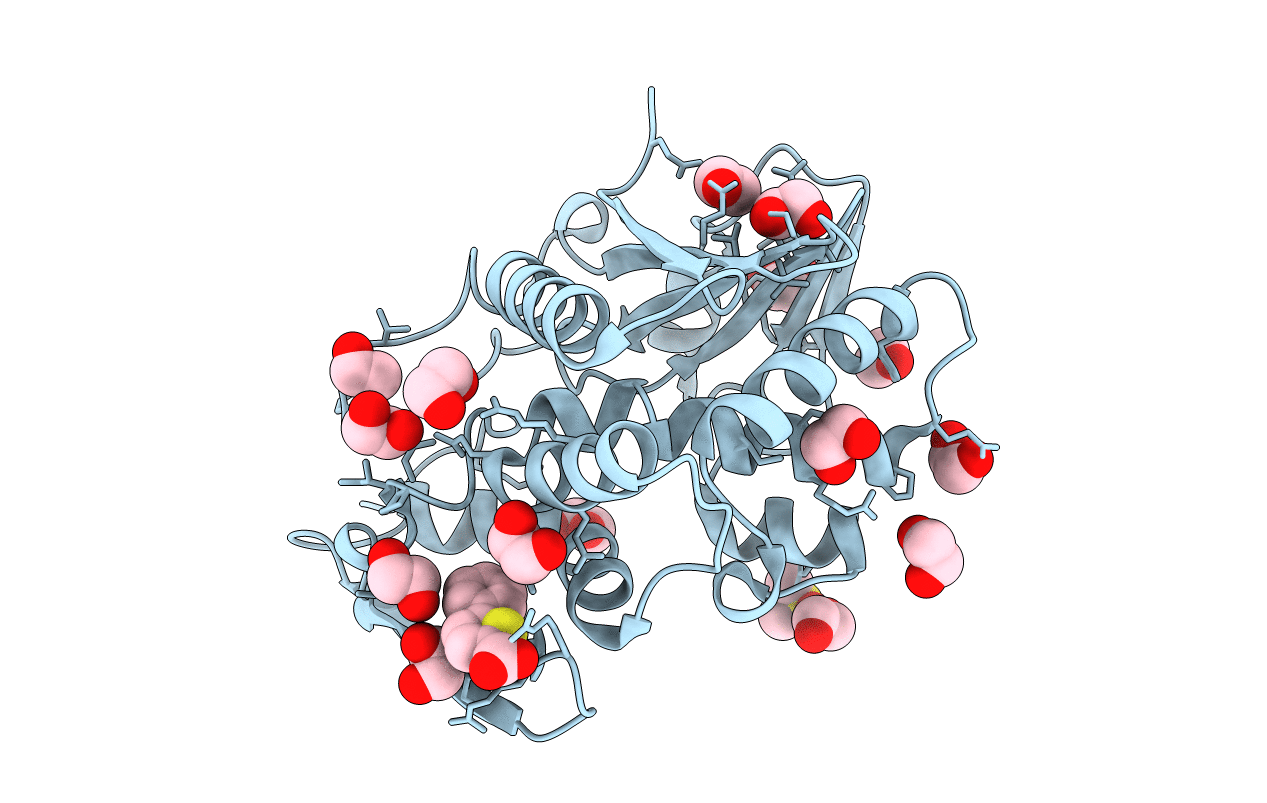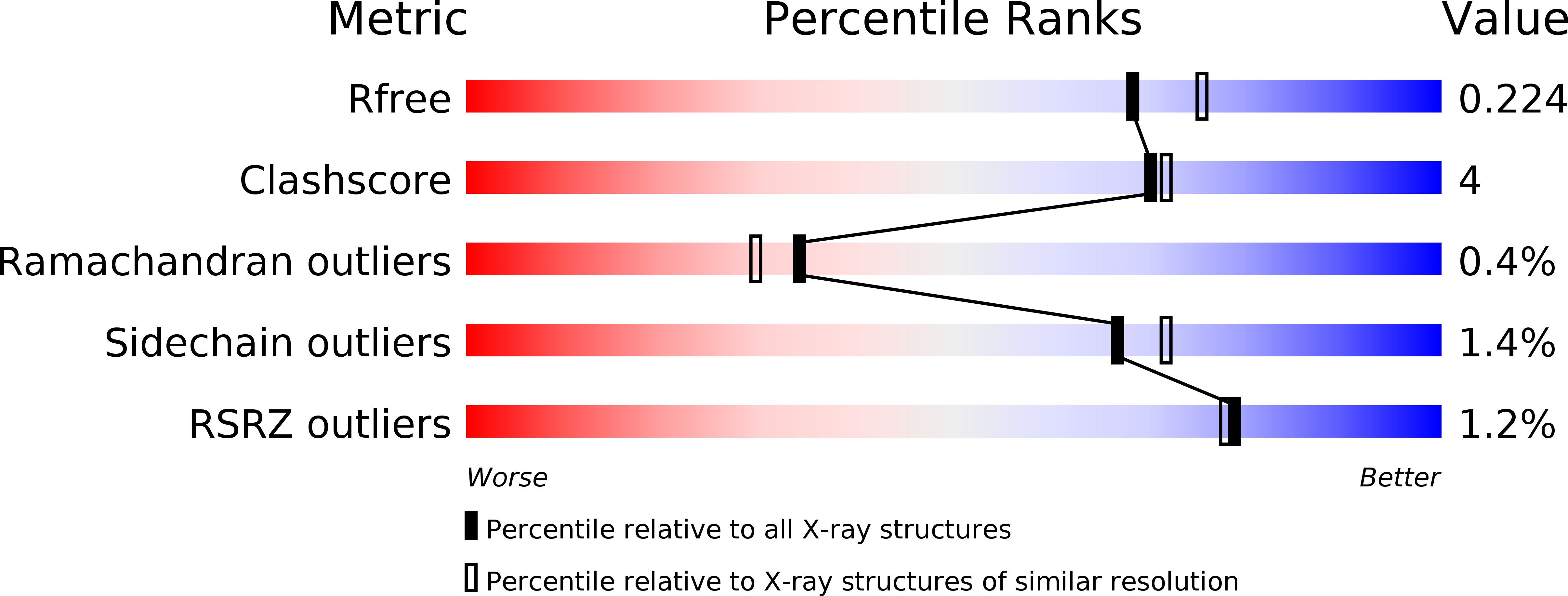
Deposition Date
2019-10-24
Release Date
2020-06-17
Last Version Date
2024-11-13
Entry Detail
PDB ID:
6URX
Keywords:
Title:
Crystal structure of ricin A chain in complex with inhibitor 5-phenyl-2-thiophenecarboxylic acid
Biological Source:
Source Organism:
Ricinus communis (Taxon ID: 3988)
Host Organism:
Method Details:
Experimental Method:
Resolution:
1.99 Å
R-Value Free:
0.21
R-Value Work:
0.18
R-Value Observed:
0.18
Space Group:
P 63 2 2


